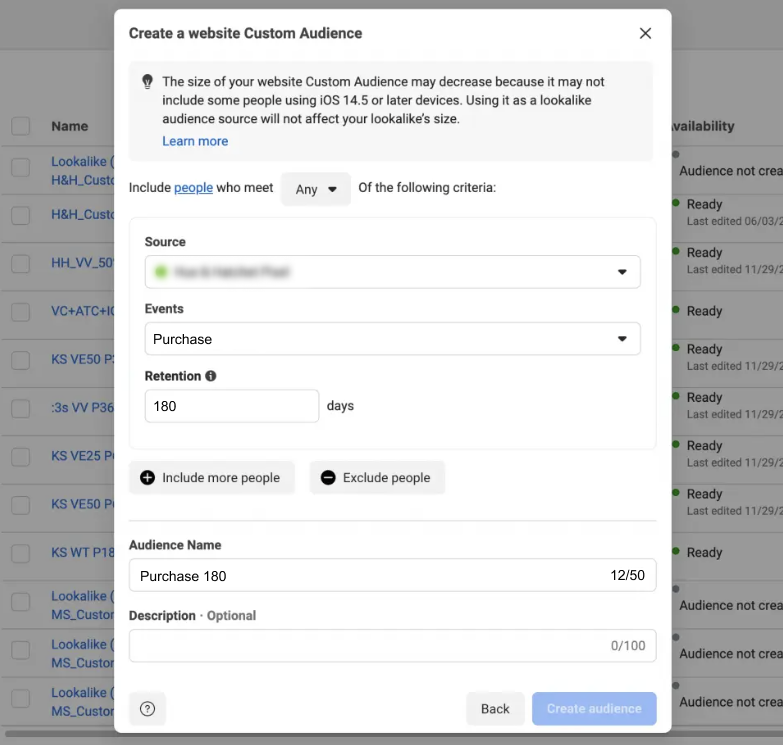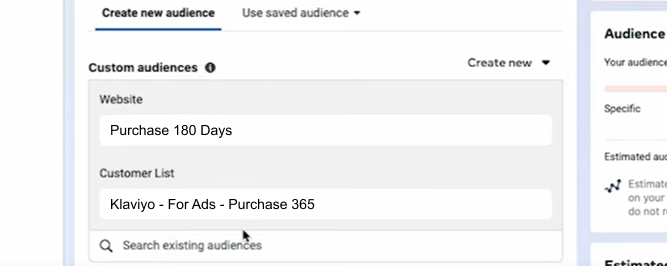
Best Facebook Ad Campaign Structure for 2025 (Expert-backed)
If your ad campaigns aren't quite hitting the mark, 2025 is your turning point.
When Sam Piliero introduced his Facebook campaign structure, we knew this could be the game-changer many eCommerce merchants have been searching for.
Let's dive in and explore the framework that's delivering an impressive 43% ROAS increase across different eCommerce brands.
1st Camp: Advantage+ Campaign
This is meant to be your primary scaling campaign.
Campaign objective
Sales
Choose a campaign setup
Advantage+ shopping campaign
Campaign name
Suggestion: ASC_Scale
Conversion
- Conversion location: Website and shop.
- Pixel: Select your proper pixel.
- Attribution setting: 7-day click & 1-day view (Reason: Opting for this setting gives Facebook's algorithms plenty of data to work with, but make sure you focus on clicks when deciding which ads to keep or cut since they show strong customer intent.)
Audience location
Make sure your audience location is set properly based on your goals.
Reporting
Make sure you have set your Engaged Audience & your Existing customers to tweak all of these in your Manage in Advertising settings. Here’s how:
Click Manage in Advertising settings :
- Engaged Audience: 30-day site visitors + Facebook & Instagram engagers (It’s okay if it’s not the exact setup).
- Existing Customers: 180-day purchasers using your Pixel. Make sure to connect your CRM (e.g. Klaviyo or Flowio) to your ad account so your email list updates automatically.
Budget & Schedule
- Budget: Your daily budget should start at around 20% of your total budget. For example, if your budget is $1000, start with a $200 daily budget.
- Budget scheduling: Skipped.
2nd Camp: Prospecting CBO Campaign
This campaign targets new customers and uses Campaign Budget Optimization (CBO). CBO lets Facebook automatically allocate your budget to ads that are most likely to achieve the best Return on Ad Spend (ROAS).
Campaign objective
Sales
Choose a campaign setup
Manual setup: Manual sales campaign
Campaign name
Suggestion: Prospecting_CBO
Advantage Campaign Budget
- Campaign budget: Your daily budget should be at around 70% of your total budget. For example, if your budget is $1000, set your daily budget to $700.
- Campaign bid strategy: Highest volume or value
Reporting
Ensure your Engaged Audience and Existing Customers settings are adjusted in the Manage in Advertising section, just like in the first campaign.
Ad Set 1
Goal
Target one specific interest on Facebook
Name suggestion
Interest_1
Conversion
- Conversion location: Website and shop
- Pixel: Select your proper pixel
- Attribution setting: 7-day click & 1-day view
Advantage+ audience
- Select 1 interest only. Ideally, aim for an audience size ranging from several hundred thousand to over a million. (Reason: Choosing only 1 interest allows you to clearly determine if it’s effective. If it doesn't work, remove it. If it does, keep it and choose a second interest that's closely related.)
- What interest you choose is up to your discretion.
Ad Set 2
Goal
Use broad targeting to reach a wide audience.
Name suggestion
Broad
Conversion
- Conversion location: Website and shop
- Pixel: Select your proper pixel
- Attribution setting: 7-day click & 1-day view
Dynamic creative
Off
Audience
- Use Advantage+ audience
- Switch to original audience options (Based on Sam's experience, this can yield better results with lower CPM and CPC, even though we're not telling Facebook anything about who we're targeting.)
Placements
- Use Advantage+ placements (Sam points out that this leads to higher ROAS in 99% of cases.)
- Inventory filter: Make sure you’re on Moderate inventory.
- Other settings can be kept unchanged.
Graduation Process from Camp 2 to Camp 1
Every 2 weeks, it's time to review your Prospecting CBO campaign (Camp 2) to efficiently move only the top-performing ads to your Scale campaign (Camp 1).
Here’s the drill:
- Pick the Best: Choose the best ads from your Camp 2 to add to your Camp 1 (Remember, the best-performing ads are the highest spenders with the best ROAS).
- Skip If None: If no ads stand out, it's okay to not add any new ads into Camp 1.
- Let Winners Run: Don’t pause effective ads in your Camp 2, even if they move to Camp 1. These ads are matched to the right audience, at the right time and place and it takes a lot to get there.
- Pause the Losers: Stop the ads that aren’t performing well.
3rd Camp: Retention Campaign
This is the campaign that targets your existing customers to drive repeat purchases.
Name suggestion
Retention
Budget & Schedule
Budget: Your daily budget should be at around 10% of your total budget. For example, if your budget is $1000, set your daily budget to $100.
Advantage+ audience
Switch to original audience options > Use original audience
Audience
You need to create a new custom audience because it allows you to specifically target individuals who have transacted with your business before.
In the Create new audience tab:
- Create a new custom audience: Create new > Custom audience > Your sources: Website > Input details shown in the photo below.


- Note: Make sure to include data from your CRM (Klaviyo, Mailchimp, etc.) to enhance your targeting.


- Over a last 7-day window, make sure your Frequency is not greater than 7
- Untick Advantage custom audience to make sure you’re targeting your current customers only.
Placements
- Use Advantage+ placements (Sam points out that this leads to higher ROAS in 99% of cases.)
- Inventory filter: Make sure you’re on Moderate inventory
Don't let your advertising effort go to waste
You run ads, make sales, and work hard to scale—yet your bank account barely moves. Sound familiar? It’s a common story for many eCom merchants.
The reason? Most eCom merchants don’t track their costs in real-time, especially ad spend.
With TrueProfit, you can change that. We sync your ad spend across platforms, and track every expense in real-time, giving you the clarity you need to stop profit leaks and make every dollar count.

Founder of TrueProfit & eCommerce Profitability Expert
Harry Chu is the Founder of TrueProfit, a net profit tracking solution designed to help Shopify merchants gain real-time insights into their actual profits. With 11+ years of experience in eCommerce and technology, his expertise in profit analytics, cost tracking, and data-driven decision-making has made him a trusted voice for thousands of Shopify merchants.



